Although they resemble ordinary salamanders, the golden-spotted salamander possesses distinct characteristics that set it apart from its relatives – its embryos can harness energy from the sun to produce nutrients.
The golden-spotted salamander looks quite similar to other salamander species, with an appearance that is not particularly remarkable. True to its name, its skin is black with yellow spots. It is commonly found in North America.
However, during the development of this species’ embryos, they undergo a process of photosynthesis similar to that of plants to generate nutrients. This phenomenon is directly related to the behavior of this unique amphibian species.
Adult salamanders typically go to ponds to mate and reproduce. The golden-spotted salamander only breeds in fish-free ponds, as their larvae would otherwise be devoured.
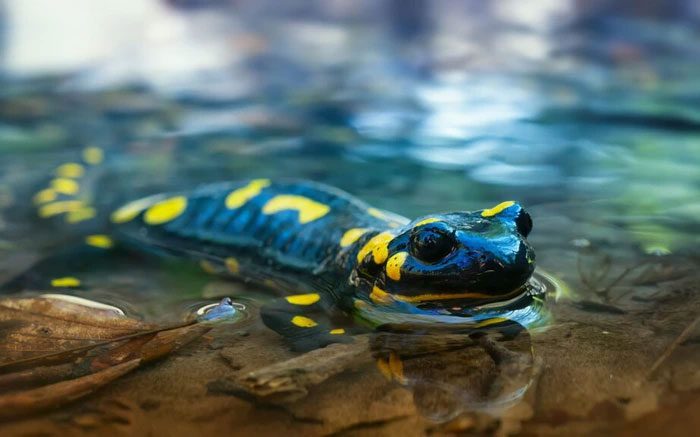
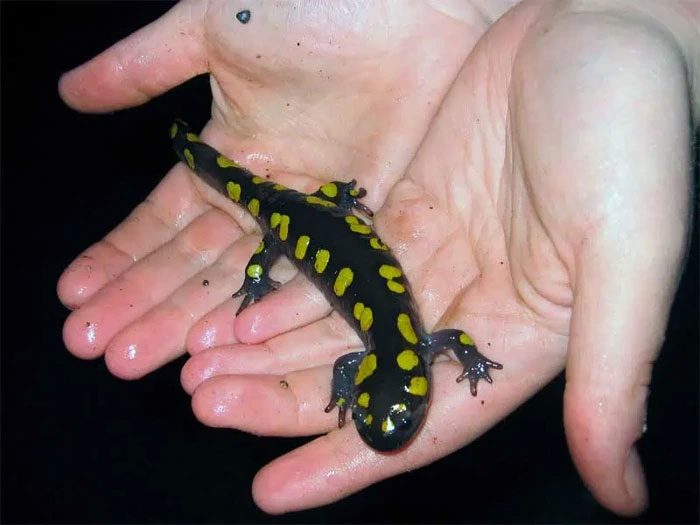
Golden-spotted salamander.
However, fish-free ponds often lack sufficient oxygen, leading to rapid spoilage of their eggs. This issue is addressed by introducing algae into the embryo mixture during reproduction.
It has long been known that golden-spotted salamander eggs have a symbiotic relationship with algae. These eggs are bright green. Recently, a researcher from Dalhousie University in Nova Scotia discovered that at a certain stage of development, the embryos contain algae within their cells. Part of the green color of the eggs comes from the embryos themselves.
Sea slugs, aphids, and eastern wasps are among the few organisms that share this ability. However, the golden-spotted salamander (Ambystoma maculatum) is the only known vertebrate capable of photosynthesis!
In fact, before scientists recognized the golden-spotted salamander’s ability to photosynthesize, it was thought to be impossible.
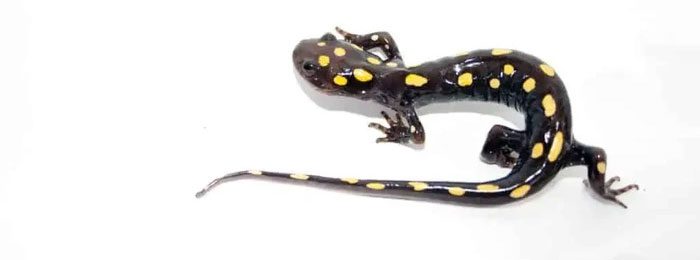
This is the only known vertebrate capable of photosynthesis!
Golden-Spotted Salamander and Photosynthetic Algae: A Mutual Relationship
The algae only enter the embryo after the neural components of the salamander’s nervous system have developed. When watching time-lapse videos, you can see a greenish light at this point, indicating a bloom of a specific type of algae.
The developing embryo releases nitrogen-rich waste at this time, providing food for the algae. Some species of algae can convert it into nutrients for the embryos at this stage.
Once inside the salamander’s body, the algae attach near its mitochondria. The mitochondria generate energy for animal cells from oxygen and the metabolic form of glucose.
The algae appear to supply oxygen and carbohydrates (products of photosynthesis) directly to the salamander cells that contain them.
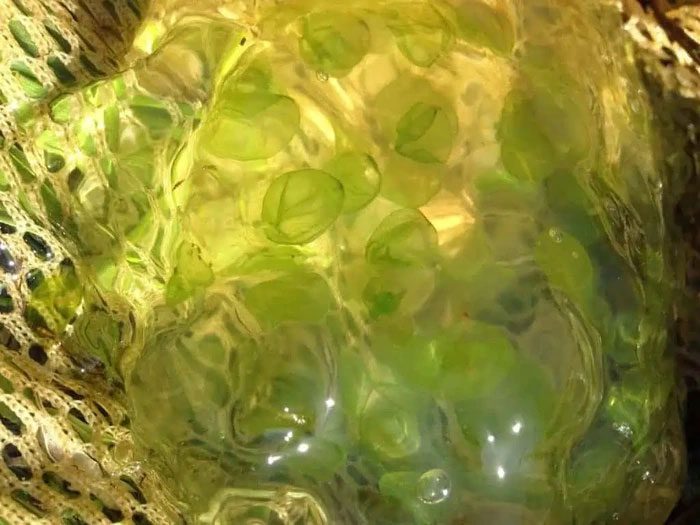
Golden-spotted salamander eggs have a symbiotic relationship with algae.
The salamander may be using these byproducts to aid in its own energy production. In return, the embryos provide the algae with nitrogen-rich waste and CO2.
This type of algae has also been found in the oviducts of female golden-spotted salamanders. The female may have had the algae and passed it to her offspring by placing it in the egg sac.
“Science shows us many ways in which life is interconnected, especially at the microscopic level, where we see many organisms relying on the close association or internalization of other species for food, defense, or reproduction,” said lead researcher John Burns.
“But the relationship between this specific type of algae and the salamander is very unusual.”
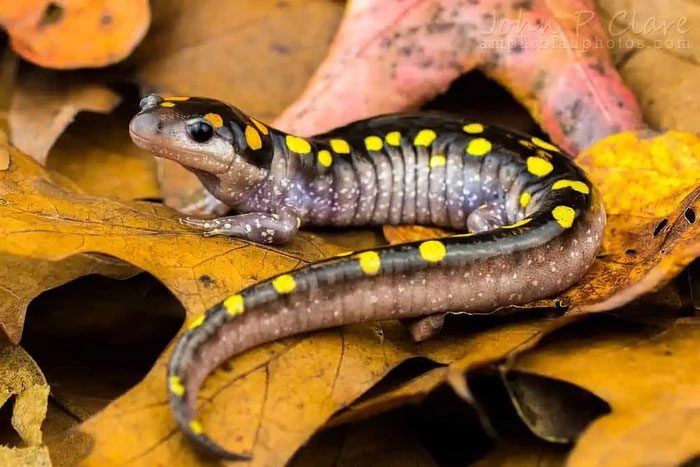
This type of algae has also been found in the oviducts of female golden-spotted salamanders.
A Unique Ability
The golden-spotted salamander is the first vertebrate known to have the ability to photosynthesize. Previously, it was thought to be impossible because vertebrates have an adaptive immune system that can destroy any foreign biological matter.
As a result, it was believed that vertebrates could not have living symbionts within them. The golden-spotted salamander may have overcome this barrier by suppressing its immune system or because the algae are not recognized as foreign. However, the true answer remains unknown.
Ryan Kerney, an assistant professor at Gettysburg College, stated: “This is indeed a strange arrangement; the salamander allows algae to live in its eggs.”
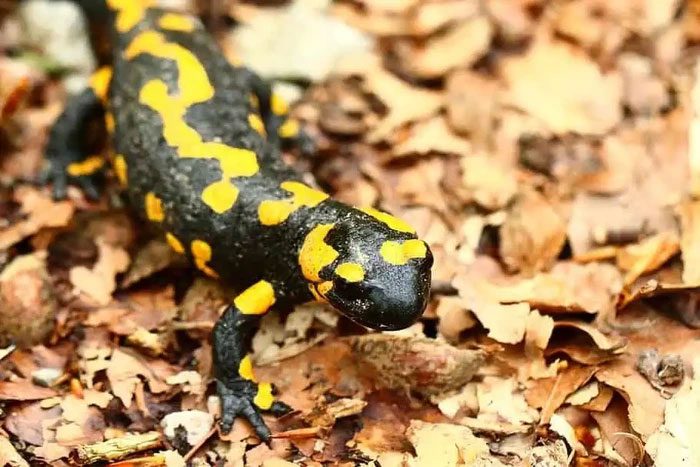
Golden-spotted salamander and algae have a complex relationship.
The complex relationship between the golden-spotted salamander and algae speaks volumes about the interconnectedness of life on our planet. It is a prime example of how life forms can evolve together, forming alliances and relying on each other for survival in the most surprising ways.
As mentioned, photosynthetic animals are extremely rare, and all known previous cases have involved invertebrates. These different species utilize slightly different methods to harness solar energy, the most common being by harboring some forms of microalgae or cyanobacteria within them.
For example, the emerald green sea slug (Elysia chlorotica) even has genes to maintain the chloroplasts it contains. It can live for up to nine months without eating anything. The pea aphid (Acyrthosiphon pisum) has a fungal gene that produces carotenoids.
In a slightly different manner, the eastern wasp (Vespa directionalis) leads electricity from its exoskeleton, silk, and its comb structure. The yellow bands of the wasp contain xanthopterin, which absorbs light and converts it into electrical energy.
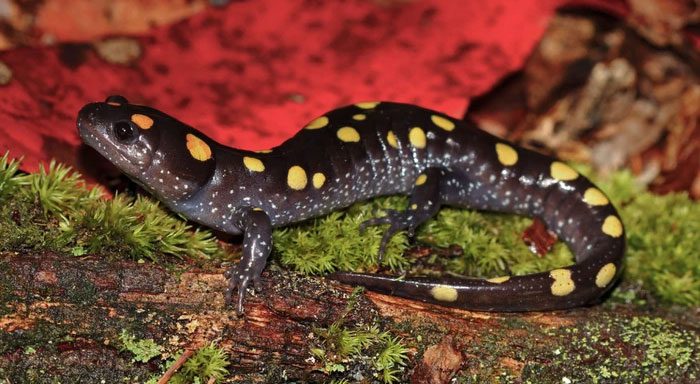
Other salamander species and some frog species have similar algal/egg symbiotic systems.
Biologist Roger Hangarter of Indiana University Bloomington stated: “This increases the likelihood of many animal/algal symbioses that we are not aware of.”
“Since other salamander species and some frogs have similar algal/egg symbiotic systems, it is possible that some of those species may also possess the type of endosymbiosis we have observed in the golden-spotted salamander.”

















































